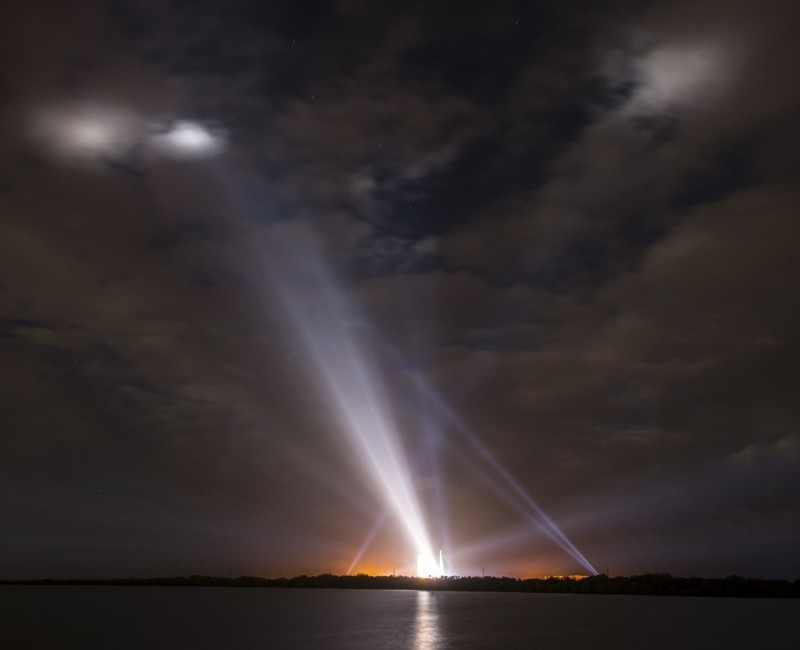NASA's unmanned Orion spacecraft has successfully splashed down about 250 miles west of La Paz, Mexico, in the Pacific Ocean after a liftoff, two orbits and re-entry that lasted just under 4½ hours.
Orion, which could one day take astronauts to Mars, made a "bulls-eye splashdown" at 8:29 a.m. PST, Mission Control said, after the spacecraft endured a searing 4,000-degree Fahrenheit re-entry and was carried to the ocean surface under four giant red-and-white parachutes.
Mission Control called the first test of the capsule a "picture perfect" mission that had surmounted "significant milestones" for the program that could eventually pave the way for putting astronauts on the surface of the Red Planet.
As we reported, NASA scrubbed yesterday's launch at Cape Canaveral, Florida, because it could not resolve a number of technical issues. Today's launch went off without a hitch.
"As NPR's Geoff Brumfiel reported earlier this week, Orion is expected to make two orbits at a distance of 3,600 miles from the Earth's surface on its second lap, before conducting a re-entry burn and splashing down in the Pacific Ocean.
"The flight is meant to validate the vehicle's basic systems, including avionics, heat shielding and parachutes.

9(MDAxOTAwOTE4MDEyMTkxMDAzNjczZDljZA004))